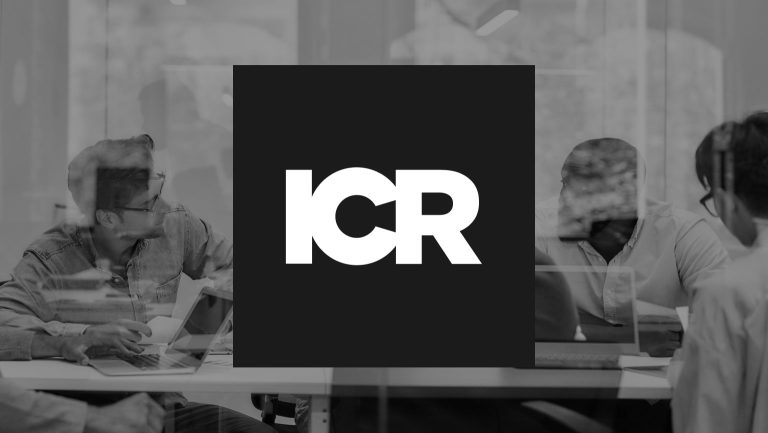As we step into 2025, the cryptocurrency market stands at a crossroads, navigating a landscape shaped by regulatory shifts, macroeconomic headwinds, and technological breakthroughs. The broad sentiment among investors remains optimistic, driven by Bitcoin’s recent meteoric rise and the burgeoning adoption of digital assets across institutional and retail channels. Yet, the terrain is anything but simple. The promise of transformative growth comes with the perpetual reminder that crypto markets thrive on volatility—a feature as familiar to seasoned investors as it is unnerving to newcomers.
In this wildly dynamic environment, two overarching themes take center stage in the minds of investors: the maturation of the broader crypto market and associated new pools of adoption and the increasing recognition of Bitcoin as a cornerstone asset. Underlying these trends is a confluence of regulatory clarity, institutional adoption, and macroeconomic forces, all converging to create a complex but compelling outlook in 2025.
Crypto’s Coming of Age: A Regulatory Framework Takes Shape
For years, cryptocurrencies operated in a regulatory gray area, a frontier where innovation outpaced oversight. That era is rapidly approaching its end. The return of Donald Trump to the U.S. presidency has introduced a more crypto-friendly administration, with pro-industry figures poised to lead key regulatory agencies. The passage of stablecoin legislation in Congress, expected later this year, marks a pivotal moment, establishing clear guidelines for issuers and fostering confidence among institutional investors.
However, not all regulatory developments are cause for celebration. The EU’s MiCA regulations, for instance, have tightened the screws on stablecoin issuers, excluding non-compliant players from the lucrative European market. Such moves underscore a growing trend: while regulatory clarity is undoubtedly beneficial, it comes with strings attached. Compliance is no longer optional; it’s the cost of doing business in an increasingly scrutinized sector and threatens to erode one of the cornerstone aspects of the crypto market which appeals to so many, the relative under-regulated nature of the beast.
For the broader crypto market, these developments are double-edged. Regulatory clarity promises to unlock institutional capital, legitimizing the asset class. Yet, the specter of stricter rules looms large, particularly for altcoins, which may struggle to adapt to a world of heightened oversight. In this evolving landscape, adaptability will be the key to survival—and success.
Bitcoin: Digital Gold or Just Gold-Plated?
Bitcoin continues to dominate the cryptocurrency narrative, and for good reason. Having breached the $100,000 mark in late 2024, Bitcoin is poised for another stellar year, with analysts predicting it will test $150,000 by mid-year and possibly approach $185,000 by year-end. Its appeal lies not only in its scarcity and decentralization but also in its growing acceptance as a store of value. Institutional inflows into Bitcoin Exchange-Traded Products (ETPs) have surged, with AUM projected to exceed $250 billion in 2025.
Yet, Bitcoin’s ascent isn’t merely a function of its intrinsic qualities. Macro factors play an equally critical role. The Federal Reserve’s decision to slow the pace of rate cuts while maintaining quantitative tightening has created a challenging liquidity environment. In such conditions, Bitcoin’s reputation as “digital gold” becomes a self-fulfilling prophecy, drawing capital away from riskier altcoins.
Still, Bitcoin is not immune to the broader market’s uncertainties and turbulence. The introduction of AI-driven technologies and high-performance computing (HPC) into mining operations threatens to materially curb hashrate growth in 2025, with some estimates placing up to 15 GW of computing capacity potentially at risk of converting to AI/HPC opportunities rather than mining Bitcoin.
The conversion of mining power to AI and HPC opportunities represents a double-edged sword for Bitcoin. While it may introduce stability by curbing hashrate volatility, it poses a direct threat to Bitcoin’s decentralization. The shift toward lucrative AI and HPC workloads potentially risks pricing out smaller, less efficient miners, further consolidating operations and network hashrate capacity among a few large-scale entities with the capital and resources to balance both activities. This concentration reduces participant diversity, heightening the risk of centralization and increasing the network’s vulnerability to regulatory or coordinated pressures. To preserve its core foundational principles, the Bitcoin community must confront these challenges with continued innovation and a renewed commitment to decentralization.
The Broader Crypto Market: An Era of Innovation and Consolidation
If Bitcoin is the steady hand guiding the market, the broader crypto space is its wilder, more ambitious sibling. Decentralized finance (DeFi) is entering what some are calling its “dividend era,” with protocols distributing revenue directly to users and token holders. Total value locked in Bitcoin-based DeFi alone is expected to nearly double, to over $100 billion in 2025, fueled by the rise of new staking protocols and Layer 2 solutions. This growth highlights an important shift: the market is moving from speculative excess to tangible utility.
Stablecoins, too, are undergoing a renaissance. With regulatory clarity on the horizon, the total supply of stablecoins is projected to double, exceeding $400 billion. Yield-bearing alternatives like BlackRock’s stablecoin BUIDL and Coinbase’s USDC Rewards are challenging Tether’s dominance, signaling a more competitive and innovative stablecoin landscape.
Yet, challenges abound. Altcoins, once the darlings of speculative traders, face an uphill battle as investors gravitate toward safer, more liquid assets. The regulatory environment is particularly unforgiving for smaller projects, many of which lack the resources to navigate complex compliance requirements.
From Speculation to Substance: Crypto’s Capital Market Evolution
The cryptocurrency market in 2025 is poised for significant growth across venture capital, IPOs, and public market activity, driven by institutional adoption, infrastructure investment, and regulatory progress. Venture capital has shifted focus to foundational blockchain layers like Layer 1 and Layer 2 solutions, reflecting a maturing market prioritizing scalability, security, and interoperability. Public market issuers, especially Bitcoin miners incorporating AI and high-performance computing, are expected to see heightened interest, though concerns about Bitcoin’s decentralization remain as mining consolidates among larger operators.
A Wild Ride with No Seatbelts
For all its promise, the crypto market in 2025 remains a high-risk arena. Volatility, that ever-present companion, is unlikely to dissipate. If anything, the interplay of macroeconomic forces, regulatory shifts, and technological innovation may amplify it. The irony, of course, is that this volatility is both a gift and a curse for investors. For those with the stomach for it, the potential rewards remain immense. For others, it’s a stark reminder of the risks that come with investing in an asset class still finding its footing.
And yet, this is what makes crypto so uniquely compelling. It’s a market where opportunities abound, but only for those willing to embrace uncertainty. As we look ahead, one thing is clear: the bull market is alive and well, but the path forward will be anything but linear. In crypto, that’s not a problem, it’s a promise.
Navigating the Intersection of Growth, Regulation, and Communication in Crypto
The rapidly evolving cryptocurrency market in 2025 presents both extraordinary opportunities and significant challenges for public issuers and private companies alike within the digital asset space. As regulatory frameworks solidify and macroeconomic forces shape market dynamics, the need for clear and proactive communication has never been greater. Companies must prioritize transparent disclosures that not only address immediate market concerns but also articulate the long-term impact of industry trends on their strategy and competitive positioning.
Equally critical is accepting the educational responsibility management teams bear in fostering broader understanding and acceptance of this nascent industry. By demystifying the complexities of digital assets and highlighting their transformative potential, companies can facilitate greater adoption among generalist investors and the wider public. This dual focus—on clarity in communication and education—will not only bolster individual corporate strategies but also contribute to the maturation and perception of the cryptocurrency market as a whole, paving the way for a more stable and inclusive financial future.
As the industry continues to grow, its success will hinge on how effectively it bridges the gap between innovation and understanding, ensuring that all participants—seasoned investors, newcomers, and management teams—navigate this high-stakes landscape with confidence.


